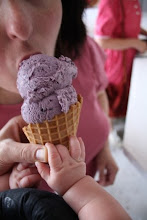MKA: The Ideal Friendship

Its interesting to think about why MKA are (were) attractive as a concept to young girls. They are the ideal best friends. Twins. Near mirror images of one another. To the outside world they would seem to never be alone. Always able to count on eachother. To a tween I would imagine this to be an ultimate goal in the search of a "best friend." Hell, for a grown up this is ideal. Someone who gets you...like you get yourself.
Excerpts from "Friendship" in the Encyclopedia of Childhood and Adolescence
Why have friends? "To have somebody to play with," responds the 9-year-old. "So you won't be alone. To have someone to back you up, to stand by you," answers the 12-year-old. These two replies reflect a developmental perspective on friends and friendships that appears to be characteristic of children in diverse cultures and societies.

The likelihood that children's close friendships are with members of the same sex rises to near certainty during middle childhood so that by age 12, nearly all American children identify a same sex peer as their "best friend." In addition to activities of mutual interest, friends tend to talk to each other--about themselves, their teachers, their families, and especially peers. In fact, Parker and Gottman (1989) concluded that gossip was a fundamental aspect of friendships in the middle childhood years when children's awareness of hierarchical social standing and popularity highlight their own relative status in comparison to others. Gossip among friends seems to serve the function of exploring those relative relationships and ascertaining one's own status.

By adolescence the intimate nature of friendship has emerged, especially for girls. Even by age 12, friends are described as someone special, someone who stands by you and "backs you up." Compared to the friendships of middle childhood, based largely on mutual interests and activities, adolescent friendships also reflect each other's attitudes, values, and beliefs. Adolescents report spending more time with friends than with their family and tend to value friends for their understanding and the sense of identity they reflect.


3 Comments:
Well you are the last I need to comment on, weather you meant for us to or not. I enjoy your blog and try to use it as a guide, thank you. Friendships or a relationship in general is what we all seek even in I believe all religions they seek a relationship with their god or others. I found my life long friend in Amber. So this is interesting to see the influence and the cleverness of the market place and reaching our deep emotions. Isn't our films suppose to have a similar approach?
Good point. We are, though trying to be fair, always marketing our own point of view in our docs.
On the MKA front I just got a book about twin relationships and what they tell us about human behavior in general. It should be interesting and hopefully another key to the puzzle of understanding how MKA function as both attractive ideals and marketing tools for the young.
U defined every stage of friendship but why so much questions between the lines?? Friends change from time to time and the bottomline is, true friends are those who never change like a weather and fly away from ur life like zephyr..nice pictures.best wishes :)
Post a Comment
<< Home